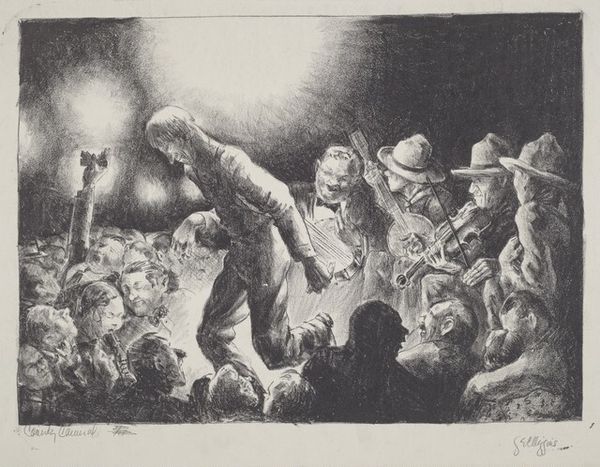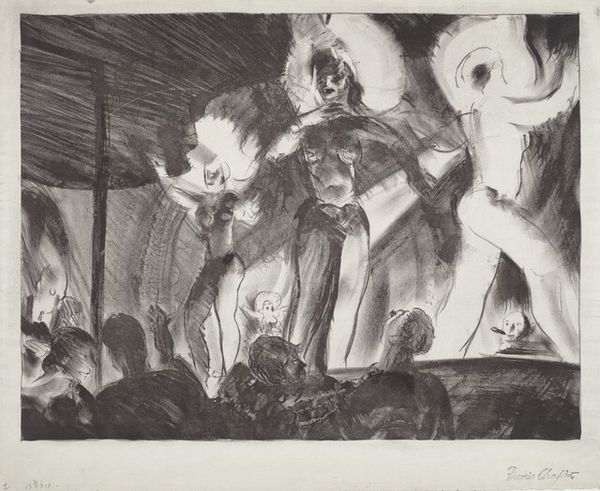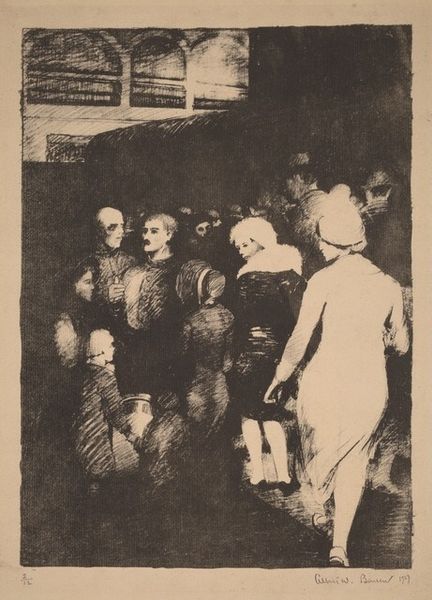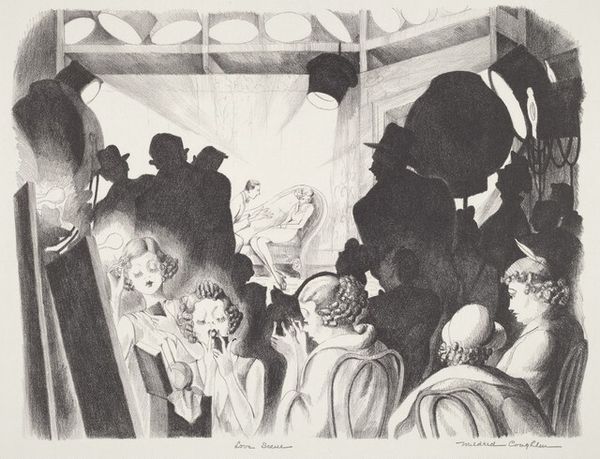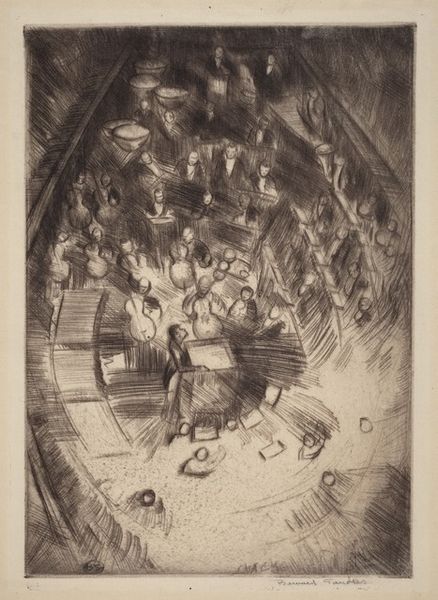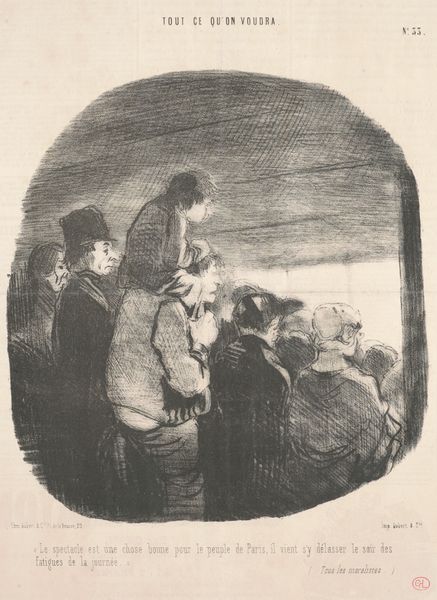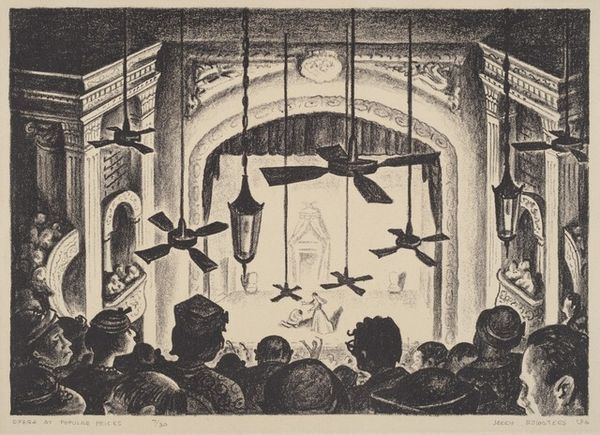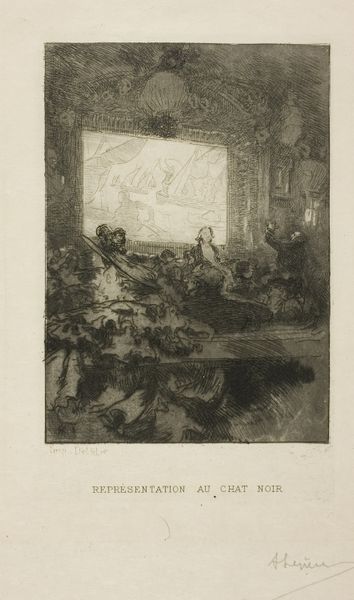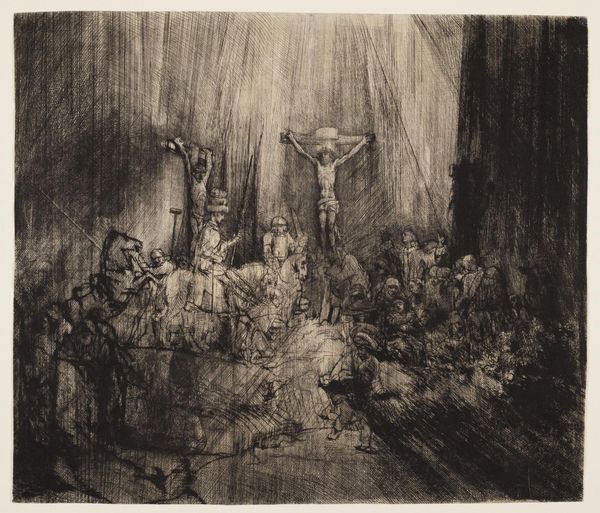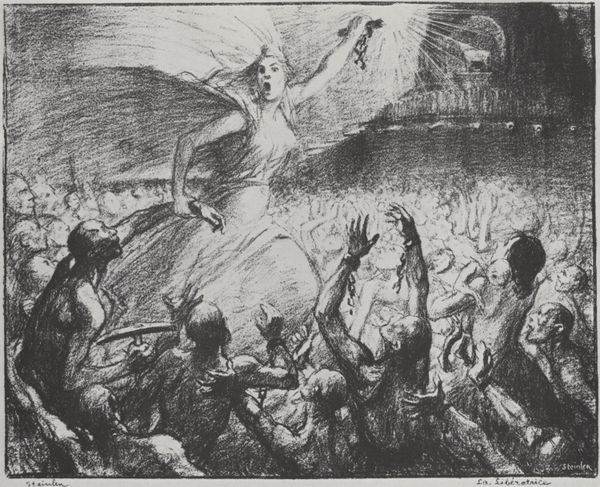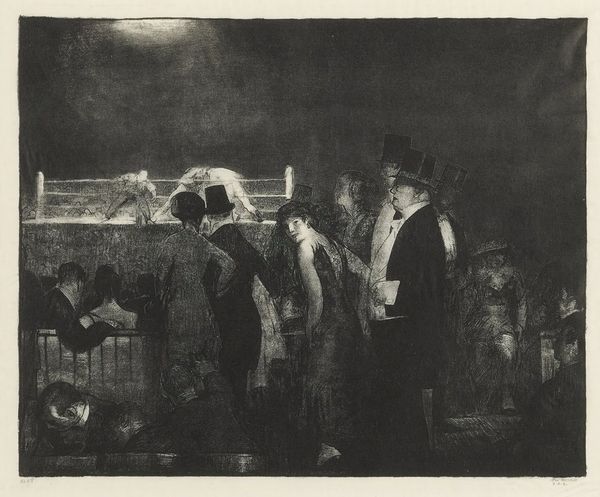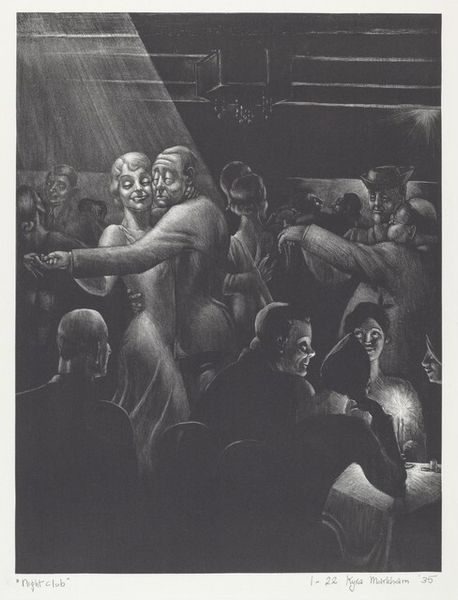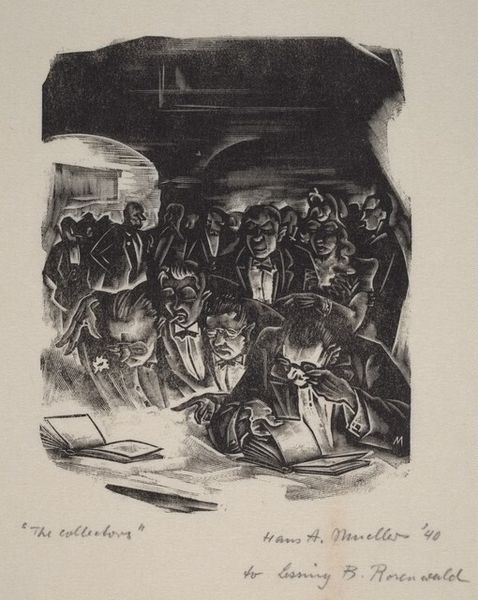
Dimensions: Image: 383 x 505 mm Sheet: 490 x 638 mm
Copyright: National Gallery of Art: CC0 1.0
Curator: Let’s take a look at George E.C. Wiggins’ “Fight Gallery,” likely created around 1935, a charcoal drawing and print. Editor: It’s a gripping scene. The sheer intensity of the crowd, rendered in stark black and white, feels almost suffocating. It evokes a primal energy. Curator: Absolutely. Wiggins seems deeply interested in depicting public life, focusing often on entertainment like boxing matches. Works such as this served a crucial function in chronicling everyday existences during challenging economic climates such as the great depression. It draws from American Realism, but there’s this undeniable thread of social commentary woven in. Editor: I agree, especially seeing how the drawing uses techniques of Expressionism to evoke social angst and tension. Notice how the light harshly illuminates faces, distorting features and emphasizing the fervor of the spectators. It asks, I think, whose spectacle are we celebrating? Curator: Exactly! The act of observation becomes part of the commentary. Are these depictions of predominantly working-class men an attempt at celebrating working-class life or a detached and uncritical consumption of violence and suffering? What gendered social relations were on display within these social spaces and rituals? The artist provides a lens through which to consider that the historical importance of fight culture is not to be viewed through purely celebratory tones. Editor: I see the spectators' intense presence speaking of something much broader. Considering the economic climate of the era, did it provide an outlet for other pent-up emotions and socioeconomic frustrations that these populations experience every day? Curator: That’s well put. And this piece contributes to discussions about who has the privilege to be visible in public space. Does this form of entertainment give them that temporary recognition and visibility? Does visibility inherently equate to agency, recognition, or influence? Editor: Looking at this from today's vantage point it’s clear how artists and spectators grapple with the complicated intersections between public performance, violence, gender, and race—struggles still incredibly salient in contemporary discussions. Curator: A poignant piece that underscores not just what it shows, but what its very existence, within this cultural moment, brings to light. Editor: It encourages introspection. One cannot view it passively. The historical reverberations of the social dynamics on display are powerful, even now.
Comments
No comments
Be the first to comment and join the conversation on the ultimate creative platform.
